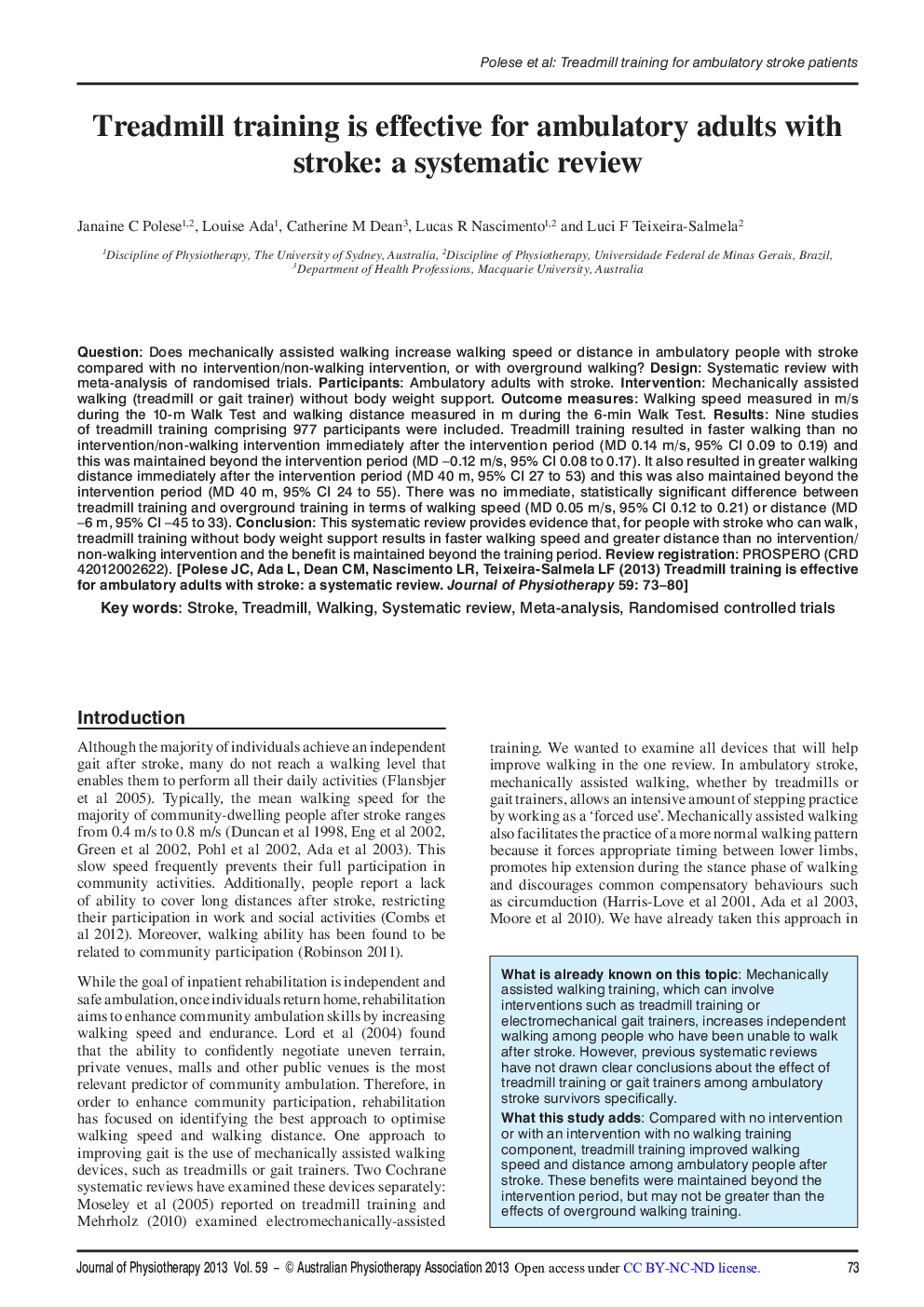| Article ID | Journal | Published Year | Pages | File Type |
|---|---|---|---|---|
| 5864120 | Journal of Physiotherapy | 2013 | 8 Pages |
QuestionDoes mechanically assisted walking increase walking speed or distance in ambulatory people with stroke compared with no intervention/non-walking intervention, or with overground walking?DesignSystematic review with meta-analysis of randomised trials.ParticipantsAmbulatory adults with stroke.InterventionMechanically assisted walking (treadmill or gait trainer) without body weight support.Outcome measuresWalking speed measured in m/s during the 10-m Walk Test and walking distance measured in m during the 6-min Walk Test.ResultsNine studies of treadmill training comprising 977 participants were included. Treadmill training resulted in faster walking than no intervention/non-walking intervention immediately after the intervention period (MD 0.14Â m/s, 95% CI 0.09 to 0.19) and this was maintained beyond the intervention period (MD â0.12Â m/s, 95% CI 0.08 to 0.17). It also resulted in greater walking distance immediately after the intervention period (MD 40Â m, 95% CI 27 to 53) and this was also maintained beyond the intervention period (MD 40Â m, 95% CI 24 to 55). There was no immediate, statistically significant difference between treadmill training and overground training in terms of walking speed (MD 0.05Â m/s, 95% CI 0.12 to 0.21) or distance (MD â6Â m, 95% CI â45 to 33).ConclusionThis systematic review provides evidence that, for people with stroke who can walk, treadmill training without body weight support results in faster walking speed and greater distance than no intervention/ non-walking intervention and the benefit is maintained beyond the training period.
